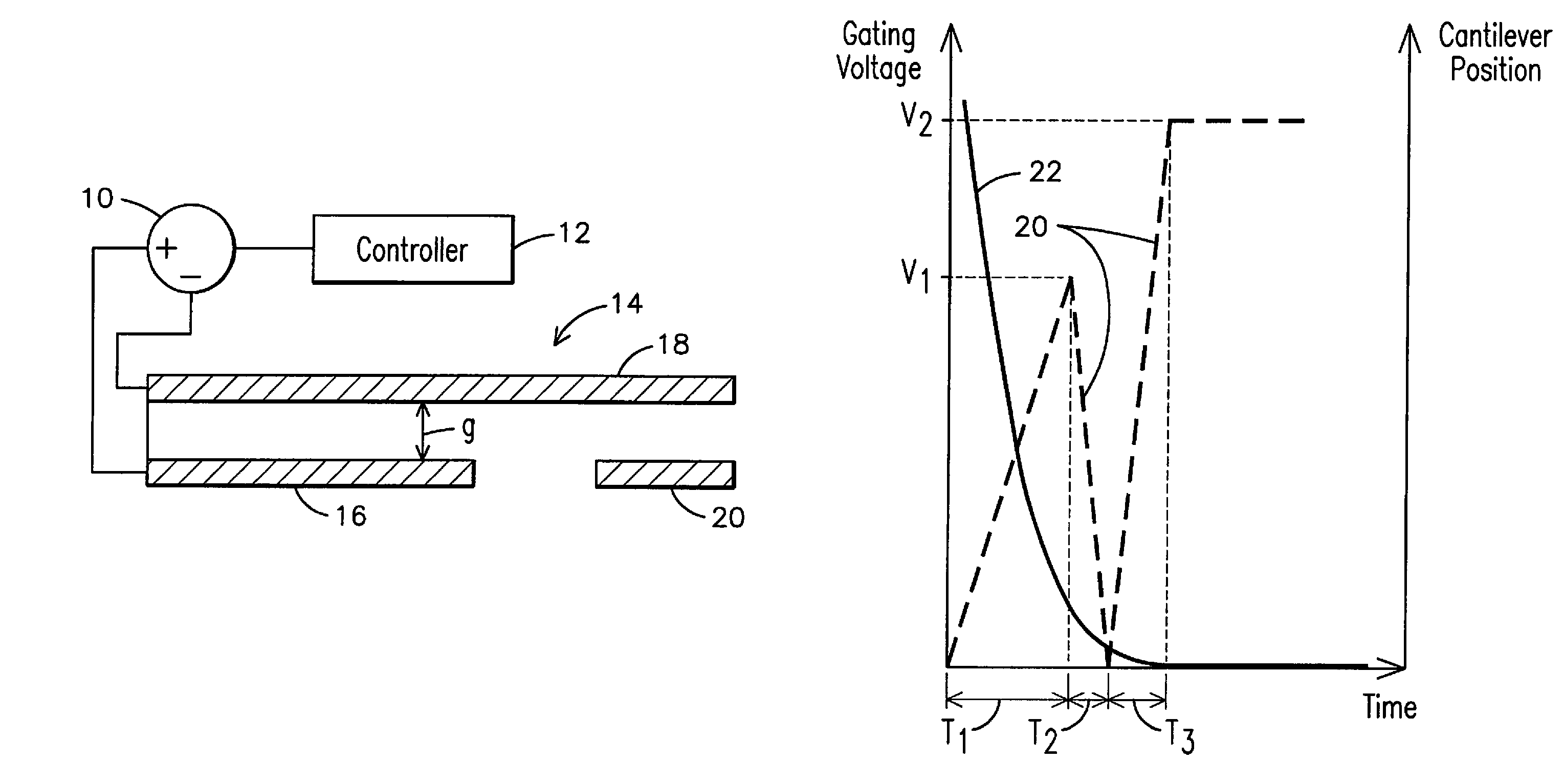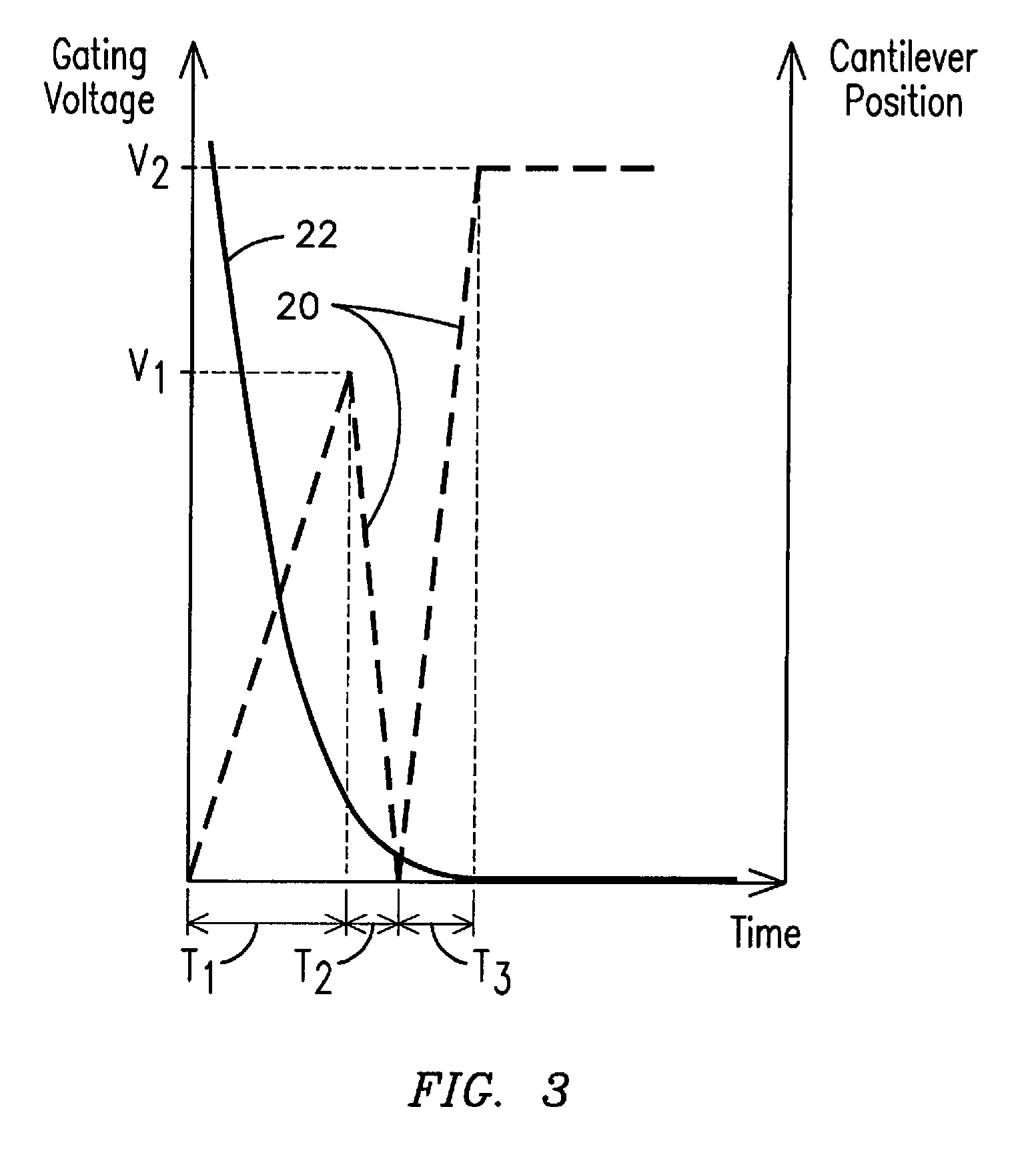Gating voltage control system and method for electrostatically actuating a micro-electromechanical device
a micro-electromechanical device and control system technology, applied in the field of circuitry for actuating a micro-electromechanical device, can solve the problems of uncomplicated implementation of the control system for the voltage source, introduce undesirable effects, electrostatic actuation, etc., and achieve the effect of reducing the amount of for
- Summary
- Abstract
- Description
- Claims
- Application Information
AI Technical Summary
Benefits of technology
Problems solved by technology
Method used
Image
Examples
Embodiment Construction
[0014]In accordance with embodiments of the present invention, structural and / or operational relationships, as may be used to provide gating voltage control (e.g., to meet a desired switching condition), such as for a switching array based on micro-electromechanical systems (MEMS) switches are described herein. Presently, MEMS generally refer to micron-scale structures that for example can integrate a multiplicity of functionally distinct elements, e.g., mechanical elements, electromechanical elements, sensors, actuators, and electronics, on a common substrate through micro-fabrication technology. It is contemplated, however, that many techniques and structures presently available in MEMS devices will in just a few years be available via nanotechnology-based devices, e.g., structures that may be smaller than 100 nanometers in size. Accordingly, even though example embodiments described throughout this document may refer to MEMS-based devices, it is submitted that the inventive aspec...
PUM
 Login to View More
Login to View More Abstract
Description
Claims
Application Information
 Login to View More
Login to View More - R&D
- Intellectual Property
- Life Sciences
- Materials
- Tech Scout
- Unparalleled Data Quality
- Higher Quality Content
- 60% Fewer Hallucinations
Browse by: Latest US Patents, China's latest patents, Technical Efficacy Thesaurus, Application Domain, Technology Topic, Popular Technical Reports.
© 2025 PatSnap. All rights reserved.Legal|Privacy policy|Modern Slavery Act Transparency Statement|Sitemap|About US| Contact US: help@patsnap.com



